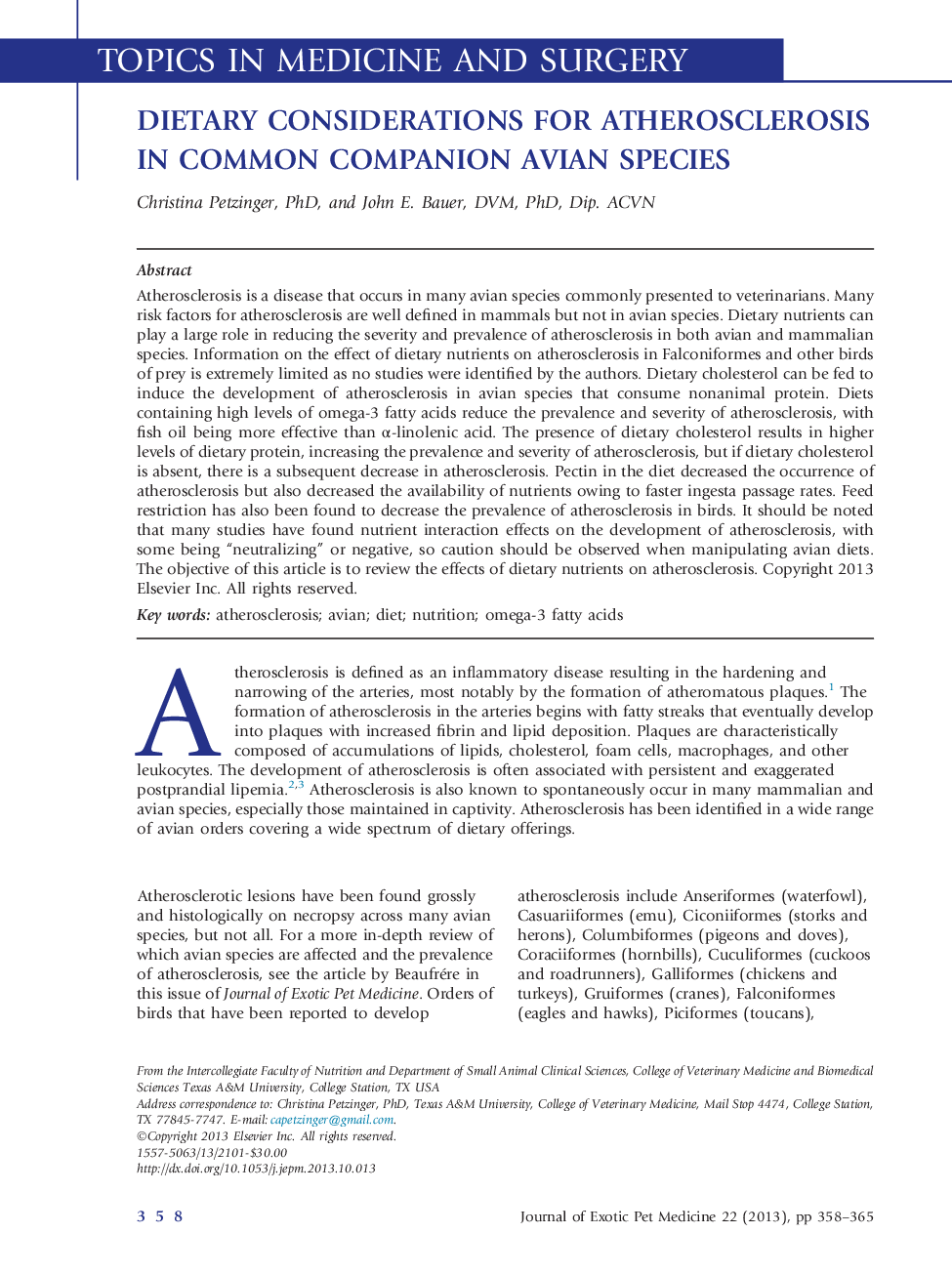| Article ID | Journal | Published Year | Pages | File Type |
|---|---|---|---|---|
| 2397098 | Journal of Exotic Pet Medicine | 2013 | 8 Pages |
Atherosclerosis is a disease that occurs in many avian species commonly presented to veterinarians. Many risk factors for atherosclerosis are well defined in mammals but not in avian species. Dietary nutrients can play a large role in reducing the severity and prevalence of atherosclerosis in both avian and mammalian species. Information on the effect of dietary nutrients on atherosclerosis in Falconiformes and other birds of prey is extremely limited as no studies were identified by the authors. Dietary cholesterol can be fed to induce the development of atherosclerosis in avian species that consume nonanimal protein. Diets containing high levels of omega-3 fatty acids reduce the prevalence and severity of atherosclerosis, with fish oil being more effective than α-linolenic acid. The presence of dietary cholesterol results in higher levels of dietary protein, increasing the prevalence and severity of atherosclerosis, but if dietary cholesterol is absent, there is a subsequent decrease in atherosclerosis. Pectin in the diet decreased the occurrence of atherosclerosis but also decreased the availability of nutrients owing to faster ingesta passage rates. Feed restriction has also been found to decrease the prevalence of atherosclerosis in birds. It should be noted that many studies have found nutrient interaction effects on the development of atherosclerosis, with some being “neutralizing” or negative, so caution should be observed when manipulating avian diets. The objective of this article is to review the effects of dietary nutrients on atherosclerosis.
